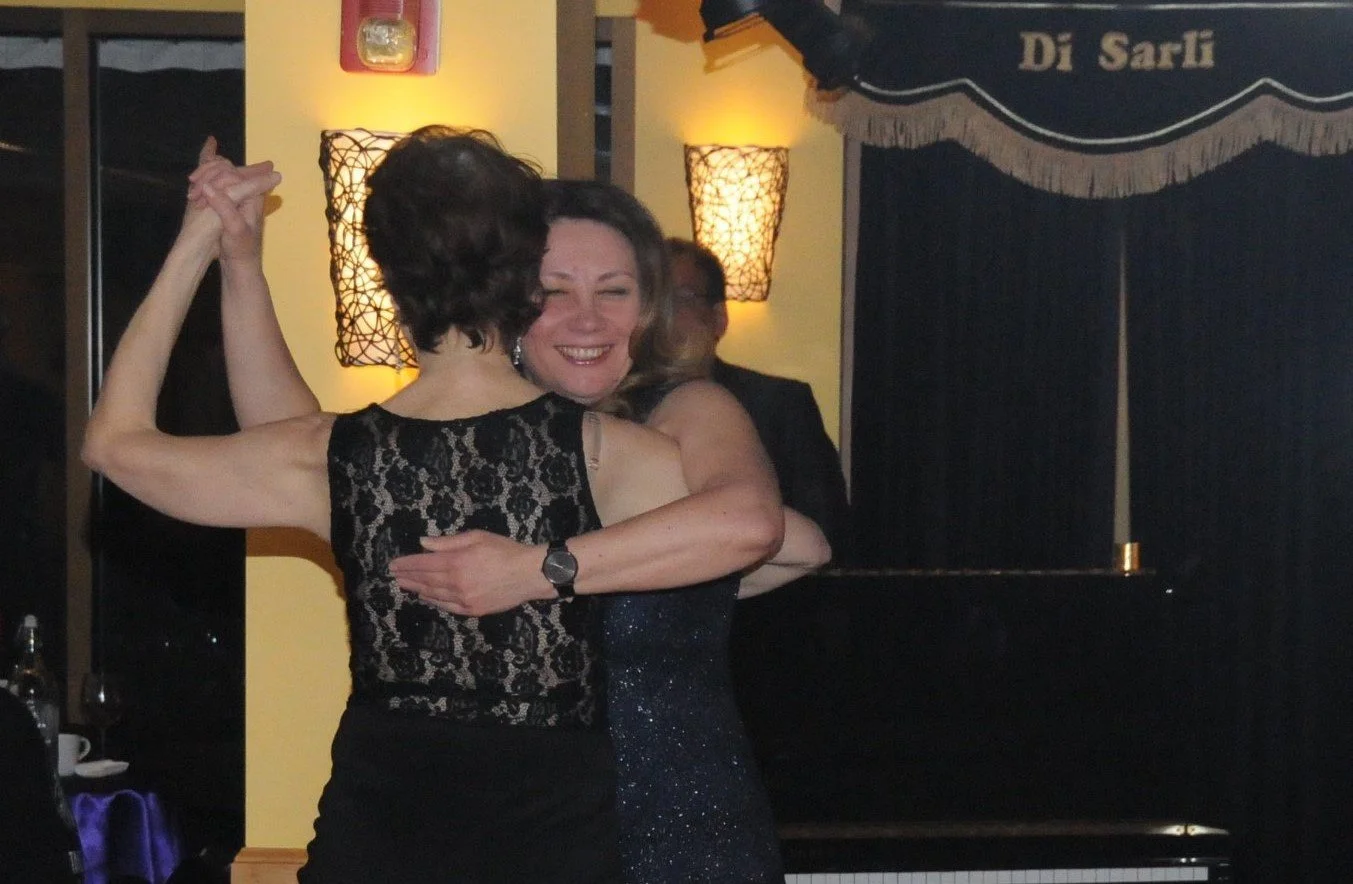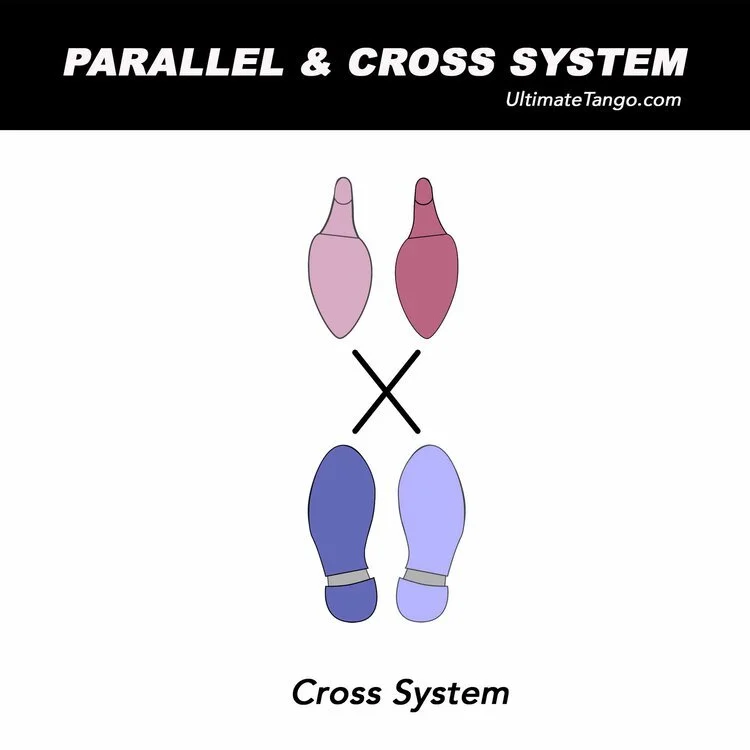The Beauty of Simplicity and Complexity. Unraveling the Tango Algorithm
Argentine Tango is often perceived as complex and mysterious, but at its core, it can be distilled into an algorithm of movement.
The dance relies on a simple yet profound system of six possible steps—forward, backward, or side—executed by both partners, creating a dynamic interplay between them. This article delves into the foundation of this "Tango algorithm," showing how two partners work as a single unit, responding to each other's movements in a precise sequence.
The Foundation: Structure as a Springboard for Creativity
While Tango may seem spontaneous, its improvisational nature is built on a solid structure. According to Ultimate Tango,
Tango is based on the partnership functioning as "one unit" moving in synchronization.
This partnership is rooted in the understanding that when one partner moves forward, the other moves back, and so on, creating a balanced dance.
Each partner has six potential movements, with each step—forward, backward, or sideways—mirroring their counterpart’s.
Tango students often express fascination with how these fundamental movements open up infinite possibilities.
One student shares, “It’s the paradox of structure and freedom in Tango that captivates me. The steps are set, but the way you combine them is limitless.”
Indeed, while other ballroom dances rely heavily on predetermined patterns,
Tango embraces unpredictability within its framework.
The leader initiates a movement, and the follower responds, creating a conversation in movement that is as much about feeling as it is about form. This improvisational quality is what keeps dancers coming back to Tango, constantly discovering new ways to interpret the music and their partner’s movements.
Breaking Down the Algorithm: A Closer Look
The core of Tango's algorithm is straightforward: both partners move in three possible directions—forward, backward, or to the side.
However, what makes Tango unique is how it pairs these steps in combinations that allow for infinite variations.
For instance, if Partner 1 moves forward with their right leg, Partner 2 must move backward with their left. Similarly, if Partner 1 moves left, Partner 2 must move right, maintaining a balance that is crucial to the fluidity of the dance.
These fundamental principles of balance and counter-movement are what make Tango so mesmerizing to watch and even more exhilarating to perform.
Adding to this is the division of weight. Each step in Tango requires an intricate awareness of which leg is bearing weight. One of the core tenets is that if weight is on the left leg, the right leg is considered "free" and available for movement, and vice versa. This simple rule is surprisingly challenging to master, as one dancer explains:
"You might think you're in control of your legs, but in Tango, they often surprise you. The brain-leg connection takes time to fully develop."
This emphasis on weight distribution and balance introduces a further level of improvisation. In each moment, the dancers must decide which leg to move, and how to time their step within the rhythm of the music.
The Six Steps: Endless Possibilities
Tango’s six fundamental steps consist of two forward steps, two backward steps, and two side steps. In their simplest form, these steps can be arranged in a pattern known as the "Baldoza" or "Tango Box."
This box-like pattern can be performed clockwise or counterclockwise, starting at any point, and altered to suit the music or mood of the dancers.
This "algorithm" of six steps forms the building blocks of the dance but within this simple structure lies endless possibility for variation and expression.
Each step is assigned a number, traditionally known as:
Back with the Right
Side with the Left
Forward with the Right
Forward with the Left
Side with the Right
Back with the Left
What truly makes Tango fascinating is the number of variations possible even within these constraints. As Ultimate Tango describes,
the basic six-step system can generate multiple patterns, and by shifting the starting point or reversing the direction, dancers can create twelve variations.
This adaptability allows for Tango’s hallmark improvisation.
Possible Outcome 1
Possible Outcome 4
Possible Outcome 2
Possible Outcome 5
Possible Outcome 3
Possible Outcome 6
Experienced dancers have learned to explore these variations to their fullest potential, sometimes without even thinking about the "code" that they are following. One advanced student notes,
"The structure gives us the confidence to let go. Once we understand the six steps, we stop counting and start creating.”
The Power of Connection: More Than Just Movement
One of the most essential elements of Argentine Tango is the close connection between the partners.
The embrace serves as both a physical and emotional link, enabling a continuous flow of communication.
Through this connection, the leader proposes a movement, and the follower interprets and responds, creating an intricate dance of suggestion, interpretation, and mutual trust.
As one Tango teacher emphasizes,
"Tango is about the conversation between two bodies. It's not about who leads or follows; it's about how both partners listen and respond to each other."
This connection also allows for what is known as "improvisation" in Tango. While there is an algorithm guiding the basic steps, the conversation between partners in the embrace means that no two dances are ever the same. The leader might initiate a step, but it is the follower's role to interpret and adapt it, creating a fluid, ever-changing dance that is influenced by the music, the mood, and the unique dynamics of the partnership.
Embracing the Cross System
One of the most distinctive aspects of Argentine Tango is the "cross system," which adds an additional layer of complexity to the basic algorithm.
In the cross system, the partners' legs no longer mirror each other exactly. Instead, they move in a way that allows for additional fluidity and more complex sequences of movement.
In a normal system, when one partner moves forward with the right leg, the other moves back with the left. However, in the cross system, both partners may step forward with the same leg simultaneously, creating unique combinations of movement that are only possible in Tango.
Students often describe learning the cross system as a turning point in their Tango journey. "Once I understood the cross system, it was like learning to speak a new language in Tango. Suddenly, there were all these new possibilities that I never knew existed," shares one enthusiast.
The Beauty of Simplicity and Complexity
In Tango, simplicity and complexity coexist in perfect harmony. The dance may be built on a simple algorithm of six steps, but within this structure lies infinite potential for creativity and expression.
What makes Tango so compelling is its balance between form and freedom, structure and improvisation.
Whether dancing the traditional "Baldoza" or experimenting with the complexities of the cross system, the foundation of Tango remains the same: a connection between two partners moving as one. As one student eloquently states,
"Tango is like life—it has rules, but how you follow them is up to you."
The magic of Argentine Tango lies not only in its steps but in how those steps are executed in the moment, with passion, precision, and an unwavering connection between the dancers.












